June 22, 2025 | 01:20 GMT +7
June 22, 2025 | 01:20 GMT +7
Hotline: 0913.378.918
June 22, 2025 | 01:20 GMT +7
Hotline: 0913.378.918
According to the People's Committee of Dong Nai province, the project "Concentrated aquaculture area in Nhon Trach" for the period 2017-2020 with an orientation to 2030 is built to promote the potential and available advantages of Nhon Trach District. The project is expected to make the aquaculture sector develop sustainably with increased added values, which contributes to raising people's income, promoting economic growth, and protecting the ecological environment.
According to the project, the provincial People's Committee assigned Nhon Trach District to act as the focal point to call for investors to build the technical infrastructure for concentrated aquaculture zones worth about VND226 billion including nearly VND1.1 billion from the State budget.
Domestic and foreign organisations and individuals, particularly those with competent capacity in the capital, science and technology, human resources, and available markets could join bidding for developing the concentrated aquaculture area and operating there.
“In 682 ha planned for shrimp farming, the project spends up to 602 ha for hi-tech shrimp farming to produce products of high quality and ensure food safety and hygiene to supply for domestic and export markets. This is also consistent with the agricultural restructuring orientation of Dong Nai province. In addition, the project also promotes the links from farming ponds to dining tables; reorganise production and develop synchronous infrastructure, focus on environmental protection and adaptation to climate change and sea level rise," said Tran Lam sinh, vice director of Dong Nai Agriculture and Rural Development Department.
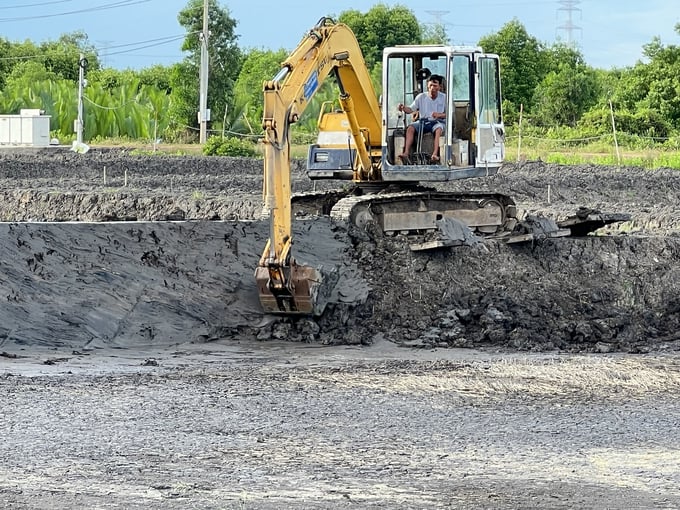
Thanks to reasonable policies, more and more people in Dong Nai Province convert inefficient farming land to hi-tech shrimp farming. Photo: Tran Trung.
According to the Economic Department of Nhon Trach district, up to now, the district has more than 1,500 ha of shrimp farming area in the form of improved extensive farming with an average yield of three tonnes per ha per season, generating a profit of about VND120 million per ha per year.
There are about 330 ha of intensive shrimp farming area, of which, normal intensive farming yields reach six tonnes per ha per season, generating a profit of about VND270 million. Meanwhile, intensive farming of white leg shrimp using C.P technology sees a yield of 60-80 tonnes per ha per season and a profit of VND3 billion if farmers raise four shrimp seasons per year.
“Raising white-leg shrimp with C.P technology helps farmers control density, breeding loss rate, water quality, food source, and waste, so profits are high. The district continues to encourage the development of this model to solve problems in economics, epidemics, and the environment," said a representative of the District Economic Department.
To support farmers to switch to an intensive shrimp farming model using C.P technology, Nhon Trach district invests in roads, electricity lines, and irrigation systems for aquaculture areas; establishes shrimp farming cooperative groups in communes, and develops VietGAP shrimp farming areas. Along with that, it called for individuals and businesses to invest in building technical infrastructure projects in shrimp farming areas, and invest in developing sustainable aquaculture projects in the area. The local authorities coordinated with the Department of Science and Technology to build a pilot model of high-tech shrimp farming on existing ponds in Phuoc An commune, then expand the model to other farming areas.
In 330 ha of intensive shrimp farming area, there is about 100 ha of intensive shrimp farming area using C.P technology in Vinh Thanh and Phuoc An communes.
Chairman of Phuoc An Commune Farmers' Association Pham Thanh Tuan said that the total area of brackish water aquaculture in the commune was about 1,100 ha.
Of that, the area of intensive shrimp farming applying high technology is about 200 hectares.
“In recent years, the high-tech shrimp farming model has received a lot of investment from farmers. In particular, in Ba Truong hamlet, there is a strong transition to this farming model. Every month, dozens of hectares are newly invested, so in a short time, the area of intensive shrimp farming that use floating ponds covered with canvas here has reached more than 60 hectares," Tuan said.
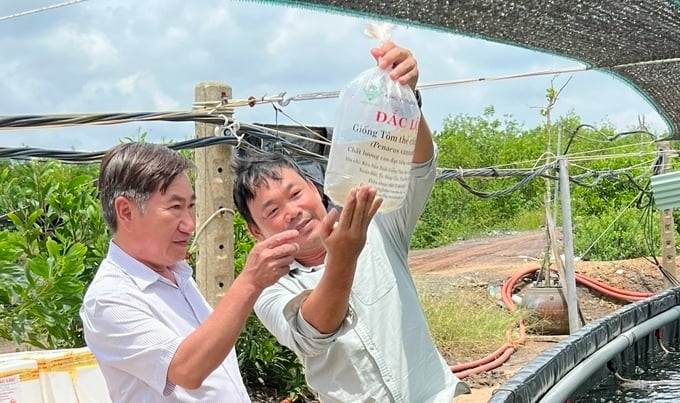
In addition to the flexible policy, shrimp farmers also receive scientific and technical training and the transfer of new technologies. Photo: MS.
“The model of shrimp farming using C.P technology is a model that C.P Vietnam Livestock Joint Stock Company built, completed, and transferred to farmers. This model requires farmers to comply with the process of treating ponds, water sources, and waste to keep the farming environment clean; ensure food sources and breeds; maintaining the recommended amount of bran and disease-preventing drugs for shrimp to grow well, without residues of resistant substances when sold, to form a specialized production area for high-quality shrimp, meeting export standards,” said Nguyen Van Nhan, head of Economic Division of Nhon Trach district.
According to the Economic Division of Nhon Trach district, the locality is in the process of implementing the criteria of a new city with further development of industry–service while a part of agricultural land will be converted to infrastructure. Therefore, the locality aims to develop agricultural models suitable to urban criteria: using a small area of land, limiting environmental pollution, and products meeting safety criteria and demand.
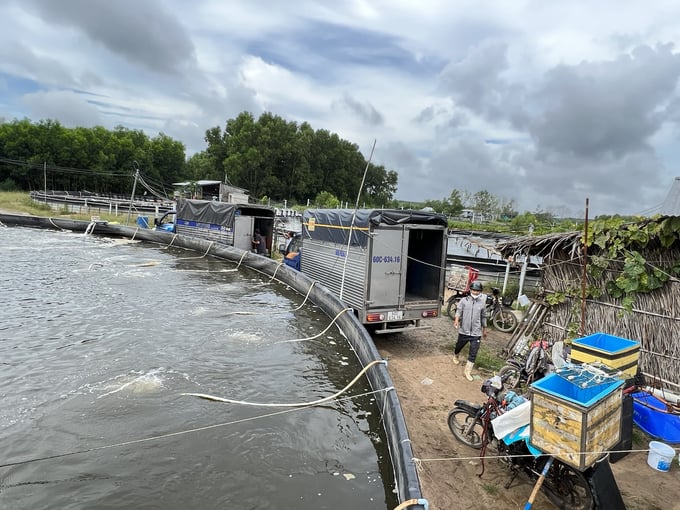
The shrimp has been prospering the lives of the Dong Nai people. Photo: Tran Trung.
“In 2021, the District People's Committee has issued a plan to implement the Sustainable Agriculture Development Programme in the area from 2021 to 2025 and orientation to 2030. The district has planned specialised concentrated production areas based on transforming the structure of plants and animals from previous production areas. The district would also form and expand models that apply science and technology in production.
The district continues to invite businesses to participate in the construction of projects linking production with the consumption of agricultural products. This adjustment not only helps to improve the efficiency of land use and income for farmers but also helps the district's agricultural sector adapt to salinisation and alum due to climate change," said the Head of the Economic Department Nguyen Van Nhan.
To develop sustainable shrimp farming, the Department of Agriculture and Rural Development of Dong Nai province has issued the Action Plan for the shrimp industry until 2025.
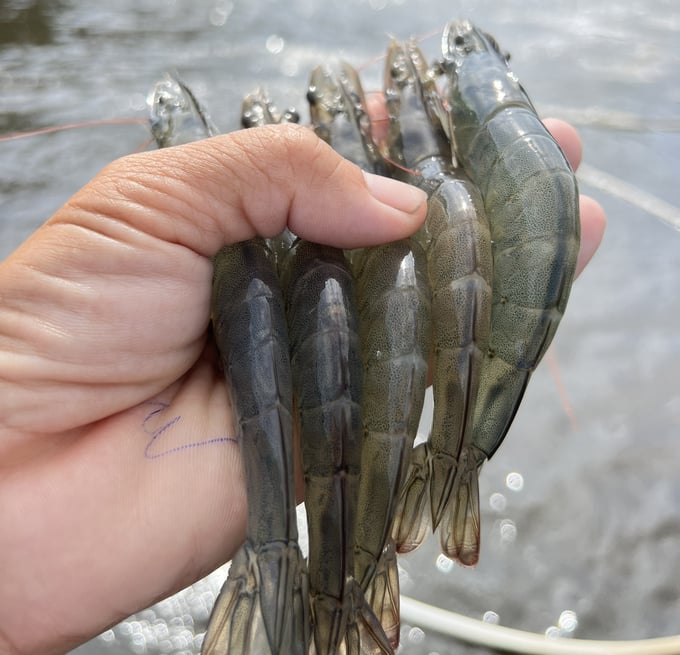
Shrimp farming has been bringing profits to Dong Nai people. Photo: Tran Trung.
Accordingly, the general goals of the plan are to promote the advantages and potential of promoting the province's fisheries sector, in which the shrimp industry thrives in the direction of safety, commodity production, application of modern technical advances, increase added values and sustainable value, actively contribute to raising people's income, promote economic growth, protect the ecological environment.
Specific targets are to develop the area of giant freshwater shrimp farming to 45 ha by 2025, with an output of 202 tonnes; to maintain a brackish water shrimp farming area at 430 ha, of which the area planned for concentrated shrimp farming is 360 ha, the area outside the planning is 70 ha, the output reaches 19,200 tonnes.
Cao Tien Sy, Director of the Dong Nai Department of Agriculture and Rural Development, said that Dong Nai was a province with a rich system of rivers and lakes, which are favourable natural conditions to develop brackish water fisheries in Long Thanh and Nhon Trach districts.
Particularly, brackish water shrimp farming with high technology applications in Nhon Trach District has brought economic efficiency and increased production value on arable land.
“With the strength to develop brackish water aquaculture, especially hi-tech intensive shrimp farming, in the coming time, districts need to pay attention and make use of policies to improve infrastructure in shrimp farming areas to better attract investors," said Cao Tien Sy, Director of Dong Nai Department of Agriculture and Rural Development.
Translated by Hien Anh
/2025/06/17/3942-2-143243_548.jpg)
(VAN) Recently, in Sweden, the Secretary of the Binh Dinh Provincial Party Committee presented the Investment Registration Certificate for the 'Polyester Fabric Recycling Complex' project to SYRE Impact-AB Company.
/2025/06/12/3721-2-202745_83.jpg)
(VAN) TH made an impression at Seoul Food 2025 with its line of natural beverages, paving the way for Vietnamese food products to enter the South Korean market.
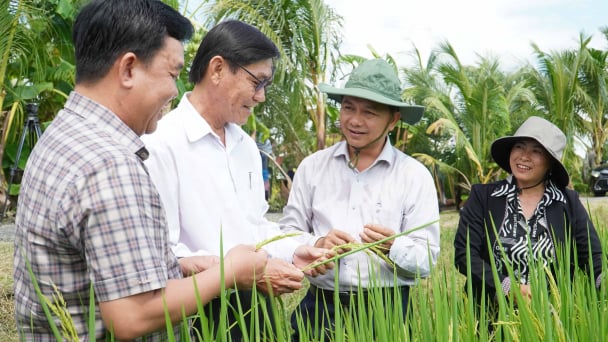
(VAN) Soc Trang's success in rice exports stems from a strategy of developing fragrant and specialty rice cultivation areas and standardizing production toward low-emission practices.
/2025/06/11/1311-5-120811_839.jpg)
(VAN) The pig farming industry is facing the challenge of comprehensive restructuring to meet requirements for quality, safety, traceability, and market expansion both domestically and for export.
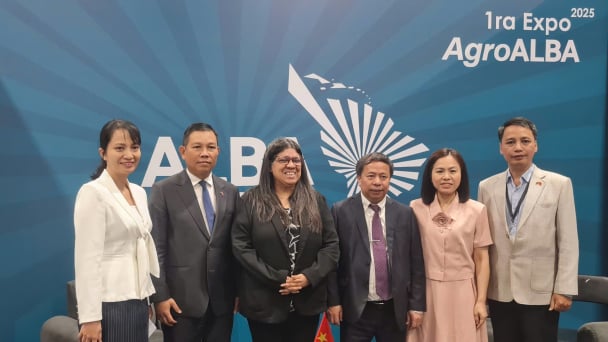
(VAN) Vietnam considers participating in ALGROALBA in order to expand agricultural production, coordinate the assessment and effective exploitation potential land.
/2025/06/05/5314-1-184727_407.jpg)
(VAN) From seemingly worthless fish scales and skin, enzymes and lactic ferments can transform by-products into peptides, opening a sustainable, effective business direction and elevating Vietnamese seafood.
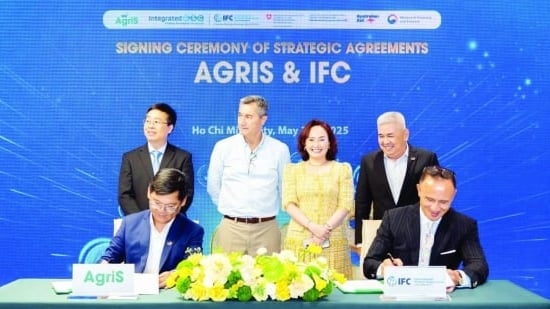
(VAN) TTC AgriS and IFC signed a strategic partnership to develop a sustainable agricultural value chain, aiming to achieve the Net Zero target by 2035.